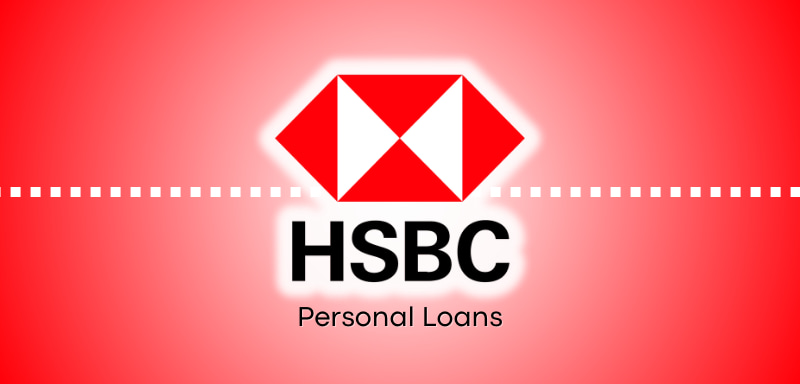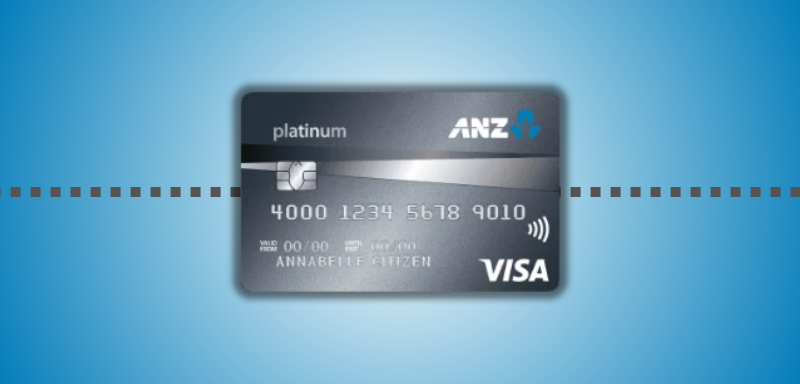Small Business Financing
Secured vs. Unsecured Business Loans: What’s the Difference?
Explore secured vs unsecured business loans in detail — get expert insights on which funding option fits your needs, lowers risk, and fosters business growth.
Advertisement
When you consider how to fund your business, the terms “secured business loans” and “unsecured loans” can make or break your plans. Decisions here affect not just approval, but your daily operations and peace of mind. Navigating these options might surprise you—they’re more different than people often realize at first glance.
Understanding the contrasts between secured and unsecured business loans matters for every entrepreneur. Getting these details right avoids headaches later, influencing costs, flexibility, and your relationships with lenders. Your company’s growth could hinge on how you choose and manage these two loan types in practice.
Keep reading to see beyond the basics. This article will guide you through the advantages, trade-offs, and practical steps to confidently select and handle both secured business loans and unsecured alternatives for your specific business needs.
Selecting Your Funding Route Shapes Risk, Requirements, and Terms
Settling on secured business loans or unsecured ones maps out not just your financial future, but the everyday risks you’ll take. The loan structure you choose sends a signal about how your business manages assets and responsibilities.
Figuring out where your business stands, and what you’re willing to leverage for cash—this has a major impact on your financing experience and negotiation leverage with lenders.
The Core of Secured Business Loans: Collateral, Security, and Confidence
When a bank or lender offers secured business loans, they’re essentially giving money in exchange for a specific guarantee. The guarantee usually takes the shape of collateral—a business asset they can claim if you default.
This collateral could be anything valuable and liquid, such as real estate, inventory, equipment, or even future receivables. Lenders prefer assets that are relatively easy to sell because it minimizes their risk in the worst-case scenario.
Borrowers offering collateral usually gain access to better interest rates, higher loan amounts, and sometimes longer repayment periods. The presence of valuable assets underpins the lender’s confidence and creates room for negotiation in your favor.
The Structure of Unsecured Loans: Trust, Credit, and Flexibility
Unlike secured business loans, unsecured loans rely heavily on business creditworthiness and the owner’s financial history. There’s no physical asset tied to the loan, making borrower trust and transparency absolutely crucial.
Lenders do deeper dives into personal and business credit, cash flow, and existing obligations. Applications for unsecured loans will usually request tax statements, bank account records, and profit/loss documentation to verify your capability to repay.
Expect stricter requirements, higher interest rates, and sometimes shorter repayment schedules. This is the trade-off for skipping collateral. Unsecured loans can work for businesses that have strong revenue or established credit but lack assets for traditional guarantees.
| Aspect | Secured Business Loans | Unsecured Business Loans | What to Do Next |
|---|---|---|---|
| Collateral Needed? | Yes | No | Inventory assets if available; otherwise, prep credit documentation |
| Approval Speed | Moderate | Potentially Fast | Expect paperwork; verify requirements early |
| Interest Rate | Lower | Higher | Calculate cost/benefit for long-term payments |
| Typical Uses | Large purchases, expansion | Short-term cash flow | Match your loan to business goals |
| Risk Level | Asset loss on default | Damaged credit on default | Review risk tolerance before applying |
Comparing Eligibility Criteria Gives You a Realistic Game Plan
Meeting a lender’s standards is the first step to securing funds. Secured business loans involve specific itemization and appraisal processes, shifting focus to your tangible business strength. Unsecured loans, on the other hand, zero in on your numbers and historical performance.
Having a clear understanding of eligibility helps you focus your efforts, whether that means collecting collateral documents or maximizing credit scores. This clarity saves time and improves your chances of approval.
What Secured Loans Require (Preparation and Pitfalls)
Secured business loan applications start by identifying what asset you can pledge. This usually includes property records, equipment valuations, or inventory lists. Lenders may request recent appraisals for accuracy.
- List the assets you’re willing to use as collateral—this reveals your real borrowing capacity and speeds up conversations with lenders.
- Verify the ownership and liens status of your assets—outstanding claims can void collateral, so settle disputes or clarify records beforehand.
- Gather proof-of-value documents and recent appraisals—providing this upfront prevents delays during the underwriting process and prevents surprises later.
- Consult a financial advisor if you’re unsure what counts as acceptable collateral—misunderstandings here can derail the entire application.
- Revisit your business insurance—collateral that’s properly insured can make lenders more comfortable and may improve terms.
After preparing your asset documentation, expect asset inspections or further questions. Prompt responses and transparency show you’re a low-risk borrower.
What Unsecured Loans Require (Focus and Discipline)
With unsecured loans, the approval process skips collateral but demands impressive credit. Lenders want solid evidence you manage loans responsibly and have reliable, recurring income.
- Check personal and business credit scores before applying—low scores reduce approval odds, so address inaccuracies ahead of time.
- Compile recent tax returns, profit and loss statements, and bank records—demonstrate income stability to justify your requested amount.
- Eliminate unnecessary debt before application—lenders compare outstanding obligations to your cash flow, so lower ratios help.
- Be ready to explain your business plan in detail—strong narratives support loan confidence, especially when hard collateral is absent.
- Assess recurring expenses and incoming payments—show you have margin to make regular payments even during revenue dips.
Focus on demonstrating responsible financial leadership. Lenders hesitate with applicants who can’t show consistent records or credible revenue sources.
Understanding the True Cost of Each Loan Type Empowers Smarter Decisions
Comparing secured business loans versus unsecured loans requires more than eyeing the sticker price. Loan terms, fees, and payment plans create different stress points for business owners.
Dissecting the details lets you anticipate cash flow impacts and avoid unexpected expenses that can strain your budget later on.
Loan Fees, Interest, and Lifecycle Costs
Secured business loans usually offer lower annual percentage rates because lenders recover value if you default. This means you’ll likely pay less over time compared to unsecured alternatives.
Unsecured loans have higher base rates, plus origination fees that can range from minor to significant. These extra charges eat into your working capital upfront, so you need to account for them in budgeting.
Some unsecured loans include prepayment penalties or re-pricing clauses. If you pay off early or miss a target, costs can add up. Always request total repayment schedules before signing.
The Impact of Repayment Terms on Business Planning
Secured business loans offer flexible terms, sometimes extending beyond five or ten years. This spreads the cost out and lowers monthly payments, freeing up operating cash for investing elsewhere.
Shorter terms, common with unsecured offers, mean higher monthly payments but potentially lower overall interest paid. The pressures of these structures can influence your hiring or purchasing decisions.
By comparing actual monthly bills and exit costs for both loan types, you can forecast how the debt will fit into your projected financial operations over time.
Asset Management and Risk Mitigation Techniques Reduce Financial Anxiety
Taking out secured business loans means more than signing a contract—it means actively managing the pledged assets as strategic tools. Risk management becomes part of your daily financial habits.
Unsecured loans demand different disciplines, such as credit utilization monitoring, debt-to-income balancing, and contingency reserves. Both loan types benefit from ongoing, intentional risk reviews.
Proactive Asset Tracking When Loans Are Secured
Track and update asset valuations annually, especially for equipment or inventory. This guards against over-borrowing or under-insuring collateral, both of which can trip up future loan access or audit reviews.
Check maintenance schedules and documentation for physical assets tied to loans. Well-kept records not only assure lenders, but also improve asset longevity and overall business value.
Proper digital backups and cloud storage for documentation ensure you’re never caught without proof if lenders request updates or the unexpected occurs.
Credit and Cash Management for Unsecured Loan Borrowers
Review credit reports every quarter. Rapid detection of errors, unauthorized inquiries, or sudden score changes allows you to correct problems before they threaten loan renewal or refinancing options.
Monitor debt ratios and set upper limits for new commitments. A simple spreadsheet can alert you if monthly obligations approach a red zone, helping you pause before taking on risky burdens.
Maintain emergency cash reserves. Unsecured lenders forgive little—buffering a few months’ worth of expenses prevents missed payments and credit dings if emergencies hit.
Choosing the Best Loan Type for Your Stage of Business
Evaluate your company’s growth stage, current assets, and projected cash flows before signing loan papers. Tailoring your approach to secured business loans or unsecured options supports sustainable growth and financial health.
Consider how your choice aligns with short-term needs versus long-term business goals. Some businesses outgrow early debt decisions faster than expected, so staying agile makes sense.
New Ventures Need Flexibility and Room to Breathe
Startups with few hard assets may lean toward unsecured loans out of necessity. Even so, keeping options open for future secured business loans supports growth when collateral accumulates.
Early-stage businesses benefit from minimum long-term obligations. Testing revenue models with small unsecured loans, then scaling via secured loans as cash flow becomes predictable, creates momentum without overreaching too soon.
Keep documentation habits tight from day one—smooth records now simplify transitions to larger, more complex financing in the future.
Established Companies Can Leverage Assets for Advantage
Once your business owns significant property or equipment, secured business loans unlock better terms and more latitude for negotiation. This amplifies expansion, new site launches, or large-scale purchasing.
Smart owners treat assets as leverage, not vulnerabilities. Optimize maintenance and valuation to preserve the ability to borrow against them, while avoiding unnecessary risk exposure.
Periodically revisit asset value versus outstanding debt—opportunities for refinancing or additional lending may emerge as your balance sheet strengthens.
Building Relationships with Lenders Strengthens Financing Outcomes
Working constructively with banks and alternative lenders multiplies your options when applying for secured business loans or unsecured lines. Nurturing relationships over time pays off in emergencies or growth surges.
Transparency, consistent communication, and fulfilling commitments set your business apart. Lenders will remember positive interactions when it’s time to renew, refinance, or request larger amounts.
Reputation and Reliability: Long-Term Lending Success
Demonstrate that you meet deadlines and communicate proactively if cash flow dips or circumstances shift. Quick, honest updates earn goodwill and sometimes temporary relief from strict terms.
Request feedback from your lender after the first few payment cycles. Engage in genuine discussions about how to improve loan terms for future deals or tap into special programs for loyal borrowers.
Even small gestures, like attending lender webinars or liking their educational content, humanize the relationship and keep your business top of mind.
Diversifying Lender Contacts for Stability
Limit financial risk by connecting with multiple lenders, including traditional banks and reliable online platforms. Relationships expand your available choices when your business needs new funding quickly.
Catalog lender terms and unique strengths in a spreadsheet—a personal snapshot for smart, fast decisions during crunch times.
Revisit every six months to verify which lenders have treated your business best, then prioritize them for your next application process.
Your Next Funding Move: Apply These Insights to Secure The Right Loan
Your business’s next loan decision should be far more than a paperwork exercise. Every insight about secured business loans versus unsecured ones adds up to better risk management, smarter budgeting, and increased financing flexibility.
Whether you’re just starting or reevaluating plans after years in operation, aligning your funding type to your business realities can make daily cash management easier and growth more predictable.
Commit now to updating your financial records, refining your negotiation skills, and cultivating real lender relationships. The right groundwork will keep your options wide open whenever new opportunities arise.
You may also like

HSBC Personal Loan review: Affordable Rates, Maximum Benefits!
Discover how the HSBC Personal Loan can help you achieve your financial goals with fixed rates, quick approval, and no hidden surprises.
Keep Reading
ANZ Platinum Credit Card Review: $300 Cashback!
The ANZ Platinum Credit Card offers a wealth of benefits, from travel insurance to concierge service. See if it’s the right choice for you.
Keep Reading